"Door Abadi" or How to unload a revolver easier and faster
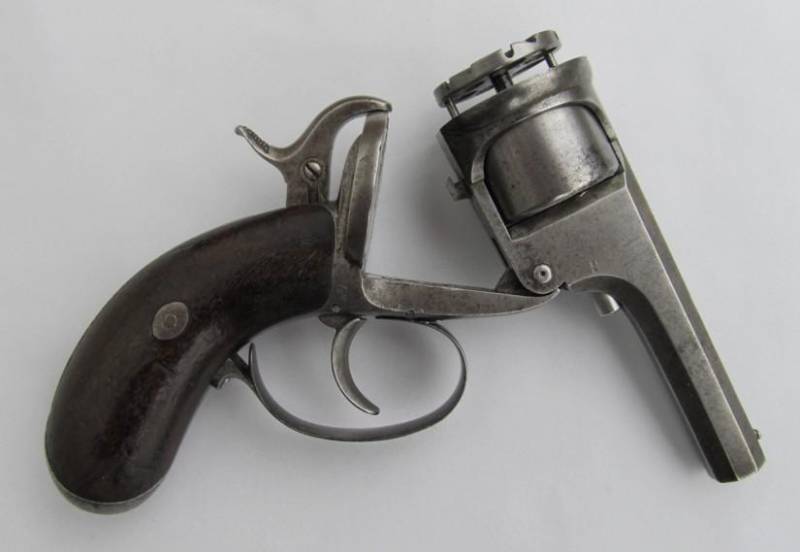
Lane's 7mm French revolver, 1866. He fired with hairpin cartridges, but already had a critical discharge system. As you can see, the Europeans practically went hand in hand with the Americans in this matter… Photo by littlegun.be
Gateway to other worlds!
Adam Lindsay Gordon (October 19, 1833 - June 24, 1870)
stories about weapons. When the first capsule revolvers appeared in the arsenal of the military, the question of how to discharge them did not arise. Shot from it - that's discharged. Not so with cartridge revolvers. It was necessary to remove the empty sleeve from the drum chambers, and preferably quickly. Since the first cartridge revolvers were systems for a hairpin cartridge, two solutions arose here at once: pulling out empty shells by the protruding hairpin, which was inconvenient, because after the shot it “sticked out” far from always, and in the most acceptable way - with a piston-pusher from the side of the barrel without removing the drum from the frame. Because it was possible, after all, to discharge it in this way: remove the drum, and then extract the empty cartridges by placing the drum on a special rod under the barrel. By the way, Smith and Wesson also used a similar technique on one of its first cartridge revolvers, and already chambered for central ignition. The drum was removed and mounted on a rod rounded at the end under the barrel - both cheaply and cheerfully!
Another, moreover, the system for discharging cartridge revolvers, which has become very popular, was registered on weapons manufactured by Colt. Although not immediately. For the first time, a device for knocking out empty shells from a drum using a long spring-loaded rod located on the right appeared on an 1872 conversion revolver. Then a long-awaited event happened: White's patent for a through-drilled drum expired, the channels in it had to be strictly cylindrical. Colt had previously attempted to circumvent this patent by fitting cone-drilled barrel-loaded drums to their conversion primer revolvers. The release of such a drum was carried out from the breech, by hitting the trigger on the bottom of the sleeve.
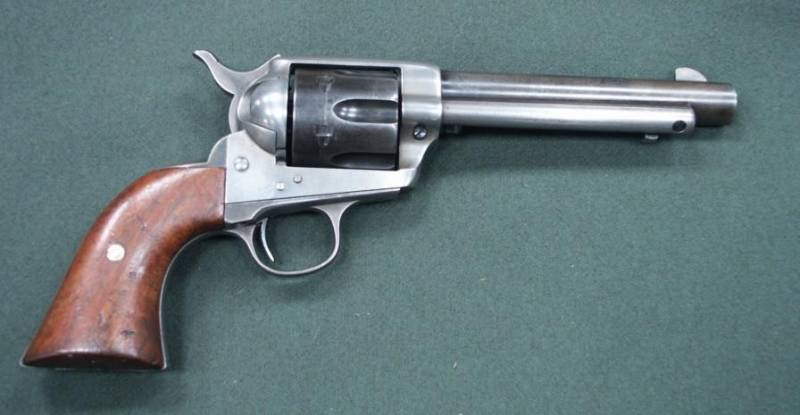
A classic of the genre is a six-shot Colt Peacekeeper in .32 model 1873 with a single-action trigger and an ejector on the right side. Photo littlegun.be
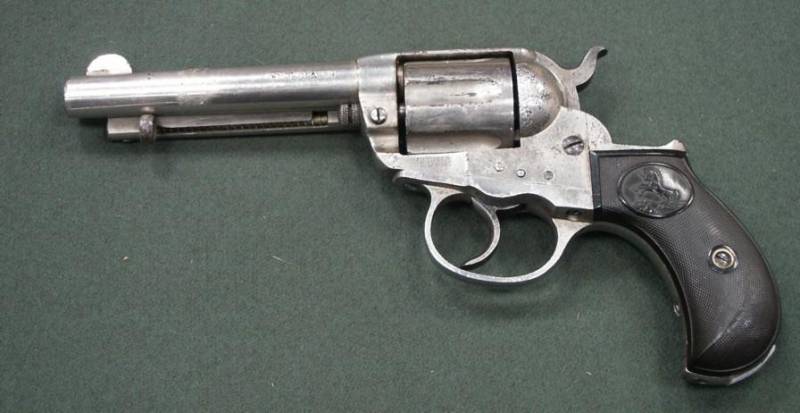
"Colt-lightning" ("lightning") model 1877 with a double-acting trigger. The device of such a manual ejector is clearly visible. Photo littlegun.be
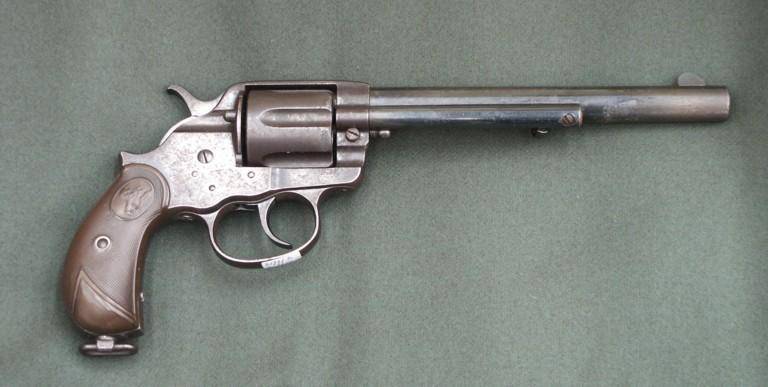
Another popular American revolver of the 70s of the XIX century. "Colt-frontier" ("borderline") model 1878. The photo clearly shows the recess that appeared on its frame for the passage of the cartridge case and the cartridge and the "Abadie door" that locks it. Photo littlegun.be
By the way, about Abadi. Many believe that he only came up with this very “door”. However, in reality this is not so, and Abadi was a weapons designer no worse than anyone else. Moreover, it was he who was the inventor of the system for the sequential extraction of spent cartridges, which then began to be put on most of the Belgian revolvers that had a solid frame. The simplicity of this device was captivating: the manual ejector rod was inside the axis of the drum, it could be pulled out and turned to the side on the earring. At the same time, he occupied a position that allowed them to push spent cartridges out of the drum with the door open, fixed on the frame.
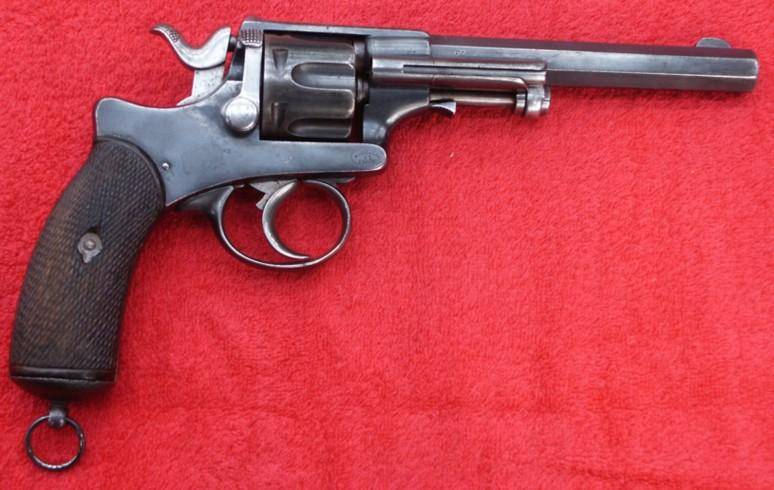
Abadi M1878 officer revolver. Length 221 mm. Barrel length 112 mm. Weight without cartridges 840. Cartridges: 9,1x17 R. Isn't it very similar to the revolver? Photo littlegun.be
In addition, the "Abadie door" was associated with a safety, and this device was also quite common on service revolvers of the 1870-1900s. The drum door interacted with the trigger using a special cam in such a way that when it opened, the trigger was automatically set to a safety cocking, which excluded the possibility of a shot at the moment of reloading the revolver. At the same time, the drum itself could be rotated if the trigger was pressed, which was disconnected from the trigger at that time by the same safety device. A very clever idea, I must say!
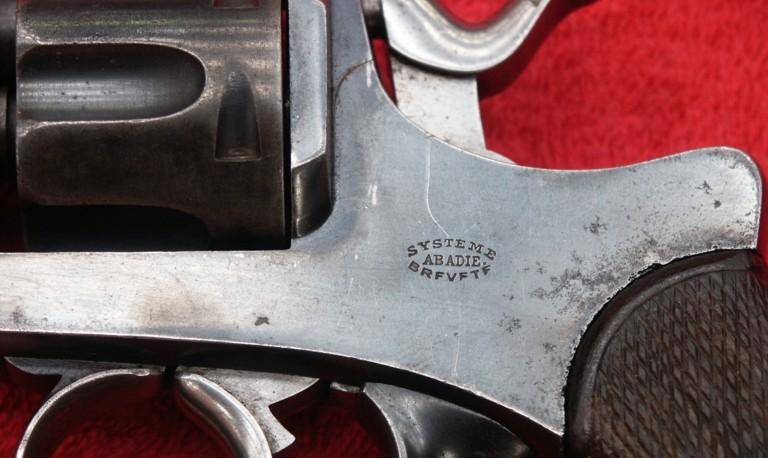
His brand, confirming the "brand" and the name of the creator of the design of this revolver. Photo littlegun.be
At the same time, two Belgian service revolvers designed for the Portuguese army were called "Abadie": an officer's model of 1878 and a soldier's model of 1886, caliber 9,1 mm. They used the trigger mechanism from the revolver "Nagant" and ... "Abadi's door" along with its own fuse. Both revolvers had a solid frame and a cover on the left side for maintenance of its mechanism. The barrel is octagonal, like many "revolvers" of that time, with an ejector rod for cartridge cases located in its lower part. The officer's USM revolver had a double action, the soldier's had a single action. The drum was loaded from the right side through the “Abadi door”, again in the same way as with the Nagant revolvers.
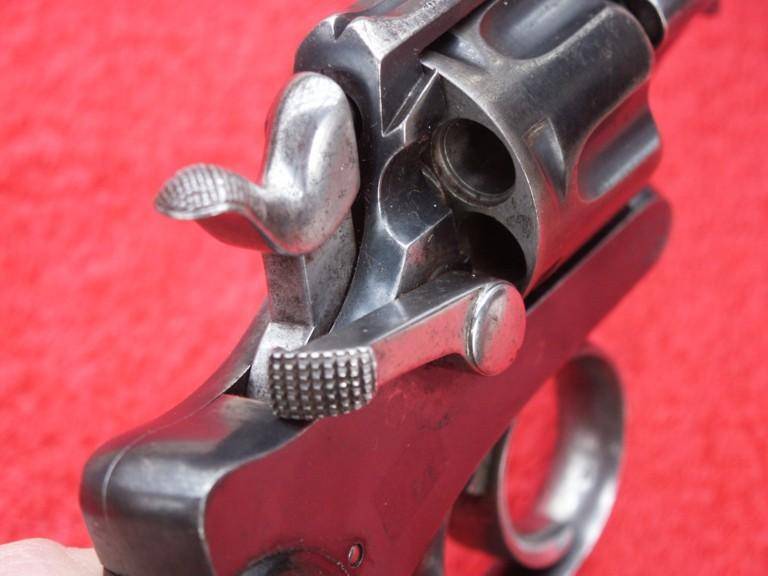
"Abadie's door" on Abadi's revolvers leaned back. Photo littlegun.be
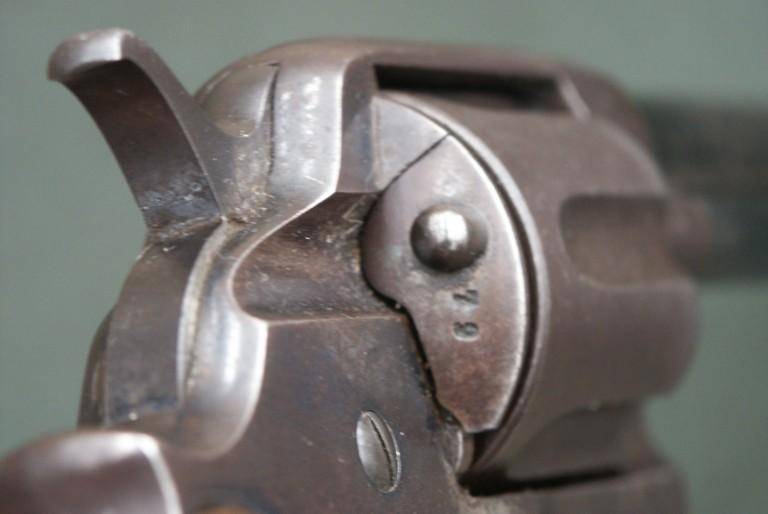
But on the Colt Frontier revolver, she leaned to the side. In the photo, she closes the end of the drum. Photo littlegun.be
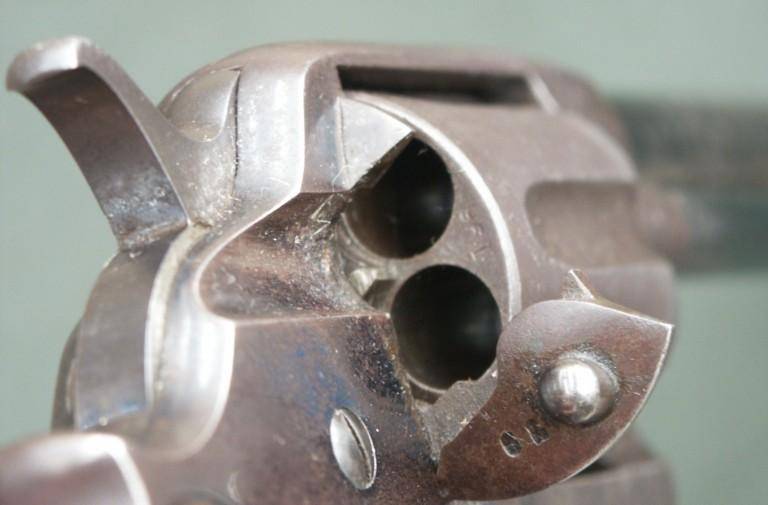
In this photo, the "Abadie door" on the Colt Frontier revolver is open, so the revolver can be loaded and unloaded. Photo littlegun.be
The handle of the revolver was covered with thick rubber plates connected to each other with a cross-shaped screw (as in Gordon Lindsay's poem!). The oval-shaped steel convex butt plate of the handle had a ring for a safety cord. Well, their release was organized at once at several Belgian factories, among which the Leon Soleil enterprise in the city of Liege produced the largest number of them.
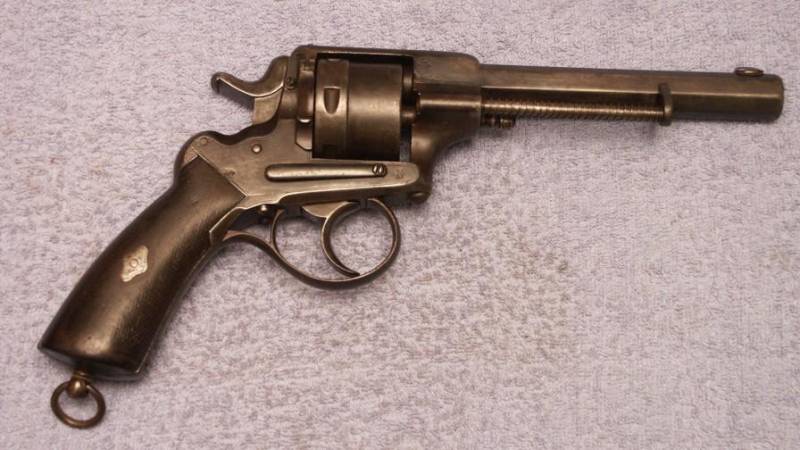
Such an extraction device has taken root on so many revolvers that you can’t even name all of them. Well, here in this photo you can see the "Abadie door" and the stem of the manual extractor on one of Francott's revolvers. Photo littlegun.be
In general, we can say that European gunsmiths, without a twinge of conscience, copied from each other not only the technical solutions used in their weapons, but even the design of their appearance, which is why they look like twin brothers, and so, in fact, it and eat. But simultaneously with copying, another, reverse process took place - a very popular "game" - "bypass the patent"! In any way, just not to pay patent royalties.
This is how, for example, the original “Abadie door” appeared on the seven-shot revolver of W. Irving caliber .32 chambered for “side fire”.
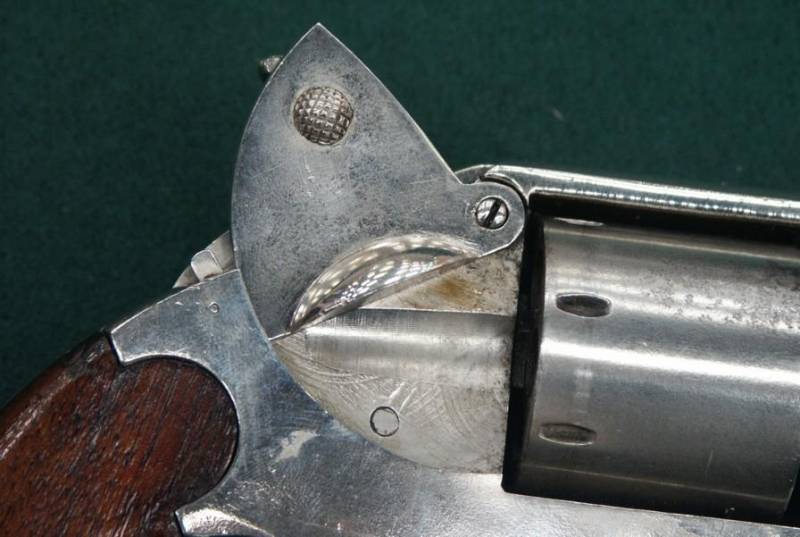
But "Abadi's door" he had "his own". She did not lean back and to the side, but rose up on a special plate! Finger rest - this corrugated bulge. Photo littlegun.be
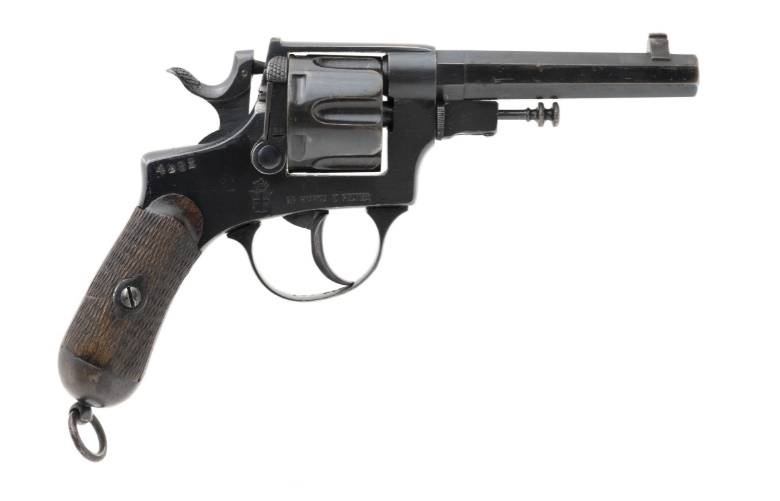
But the Italians did not particularly fantasize, and on their revolver of the Bodeo “Modello 1889” system, chambered for 10,35-mm caliber, they used precisely the “Abadie door” of Abadi himself and a very similar “rod” discharge mechanism. Photo collectorsfirearms.com
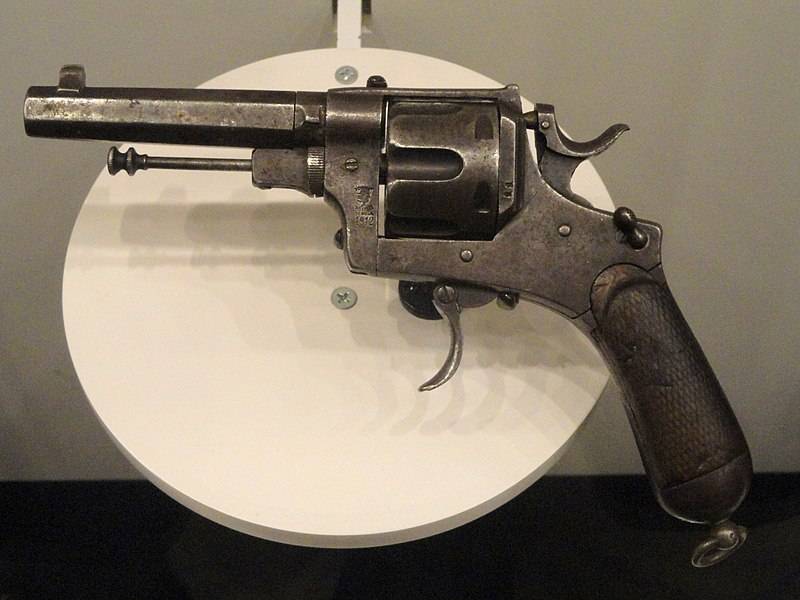
The 1889 revolver of the Italian designer Bodeo was also produced in this version, with a folding trigger, and it was also very characteristic in appearance for the European weapons school of those years. National World War I Museum, Kansas City
It should be noted, however, that back in the 1870s, revolvers with an automatic rather than manual discharge system were also designed in Switzerland, and they were very, very original. They were handled by a Swiss army veteran and gunsmith named von Steiger of Thun, who proposed a revolver that automatically ejected an empty shell after each shot. This significantly increased the rate of fire (one Swiss officer fired 10 shots in 20 seconds during testing), but at the cost of complicating the design and, accordingly, reducing the durability of the weapon itself.
The first series of von Steiger revolvers was chambered in 9 mm, and a few years later a model appeared chambered in 10,4 mm, which was eventually adopted in 1878. But in the end, the Abadi system won, and von Steiger's revolver, even in an improved version, was rejected. Although Abadi's revolver was not reloaded as fast as von Steiger's, it was still faster than that of samples with a removable drum, and besides, it was still much simpler.
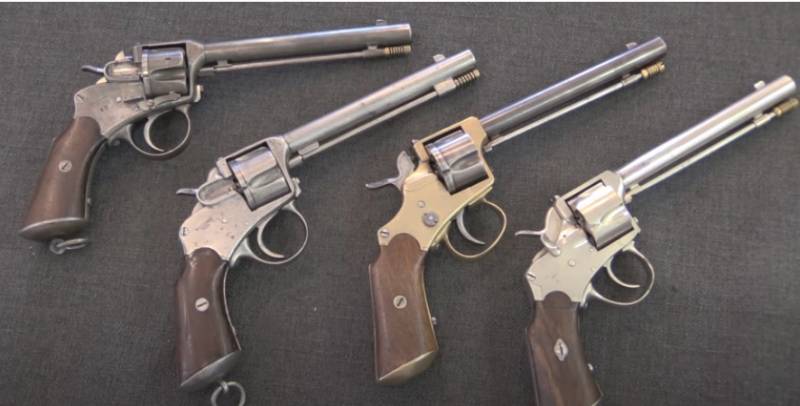
This photo shows four models of von Steiger's revolver, clearly showing how he improved it "step by step", that is, step by step: the first model is with a brass case, the second is on the bottom right, the third is on the right of the first, and finally the last - the most perfect at the top right. Photo forgottenweapons.com
The device of all four revolvers was the same, they differed only in details. Under the ledge on the right side of the frame was a small extractor lever with a hook tooth that moved back and forth simultaneously with the trigger. When moving forward, he fell into a recess on the drum and went under the rim of the cartridge. After pressing the trigger again, the lever moved back and pulled the empty cartridge case out of the drum. True, on the first sample, she flew right into the face of the shooter.
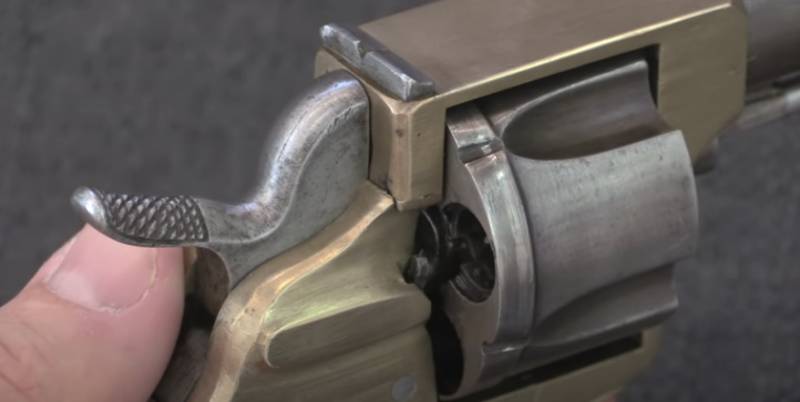
This photo clearly shows the L-shaped extractor lever and the recess under it on the drum. Photo forgottenweapons.com
A second sample appeared with a protrusion on the frame, hitting which, the sleeve flew off to the side. But this decision of the designer did not satisfy. But on the third model, a spoon-shaped recess appeared on the frame, hitting which, the ejected cartridge case was reflected to the right.
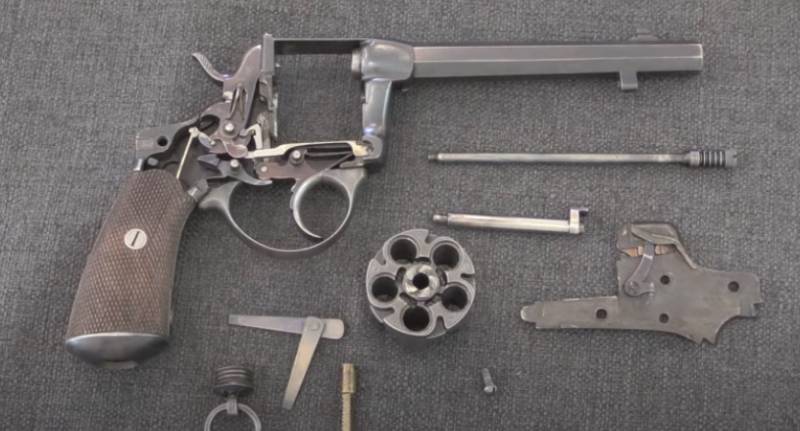
Revolver disassembled. The recesses on the drum under the extractor lever are clearly visible. Photo forgottenweapons.com
Everything seemed to be fine now, but no. Another sad defect of this system was revealed. The fact is that the cartridge, under which the lever tooth went, always turned out to be equipped! An empty sleeve fell into this chamber only after the first shot. Thus, a six-shot revolver essentially turned into a five-shot one, and even threw expensive cartridges into the wind to no avail. How to be?
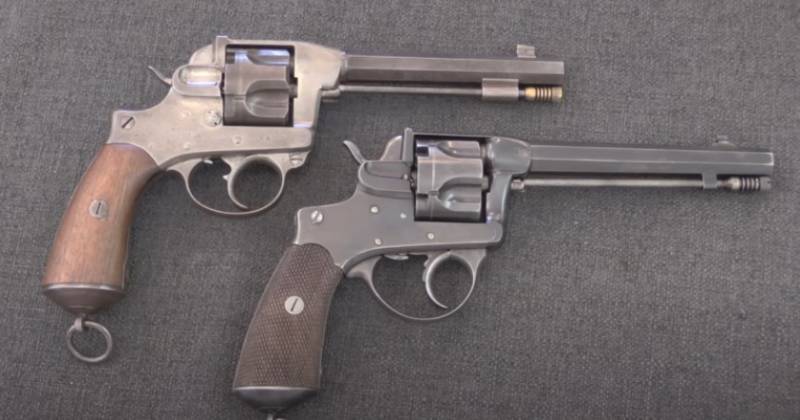
Two models of the von Steiger revolver. The push-button fuse of the extractor is already installed on the top. Photo forgottenweapons.com
And the designer came up with a drum fuse - another lever on the right on the frame. It was necessary to shoot, putting the drum on the fuse! Then turn it off and continue to shoot without paying attention to it. At the same time, the extractor tooth fell not under the cartridge, but under the empty sleeve, which, accordingly, was removed by him. Here, apparently, this detail was the "straw that broke the camel's back." All the time it was necessary to remember when to turn it on ... Otherwise, not a cartridge case, but a cartridge flew into the drum!
And, finally, the same Colt company offered its own version of a self-discharging revolver. A standard revolver "Colt New Service" with a reclining drum was installed ... a vent tube! Its opening was directly opposite one of the chambers on the right.
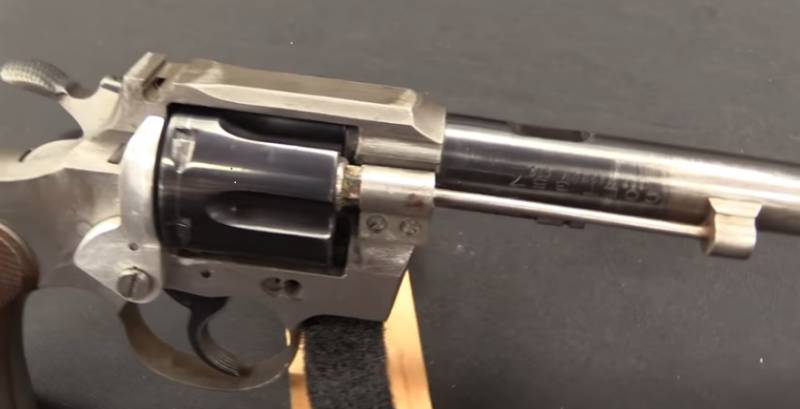
In appearance, the revolver is arranged very simply and rationally! Although the shooter, probably, should have remembered that in front of the gas outlet pipe, one should install ... an empty chamber, not equipped with a cartridge. Photo forgottenweapons.com
When fired, gases escaped from the hole, fell into an empty cartridge case (if there was a cartridge case there!) And threw it out of the drum. At the same time, she lifted up a kind of “Abadi’s door” and thanks to this she flew not back, but up!
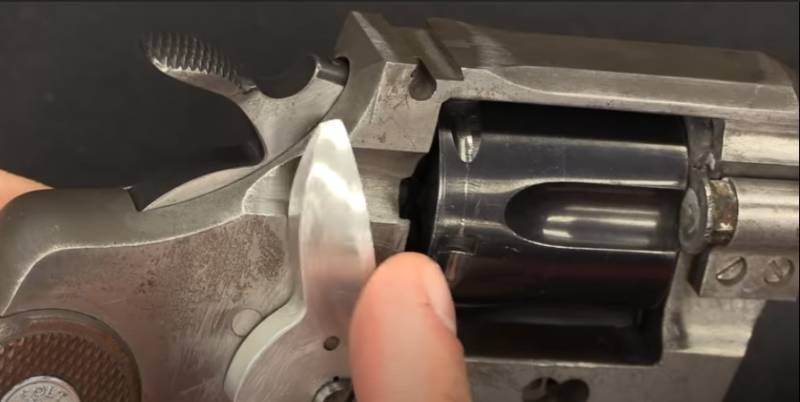
This is how this lever moved back, and the sleeve flew up at the same time. Photo forgottenweapons.com
But... it didn't work. And why it didn’t work, it’s clear!
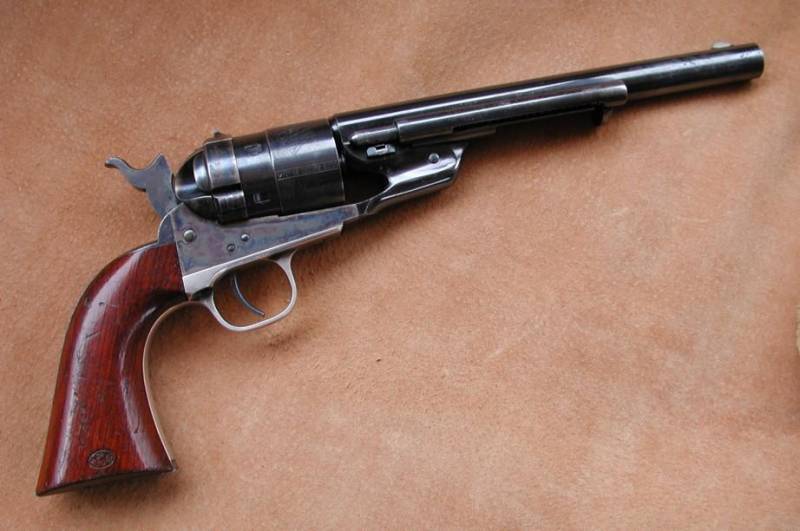
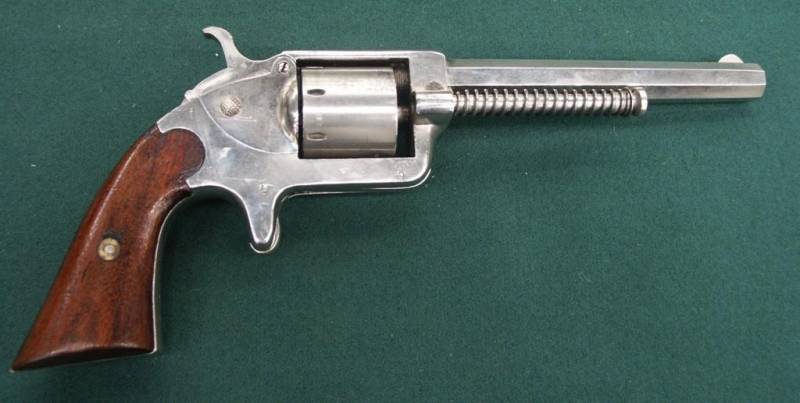
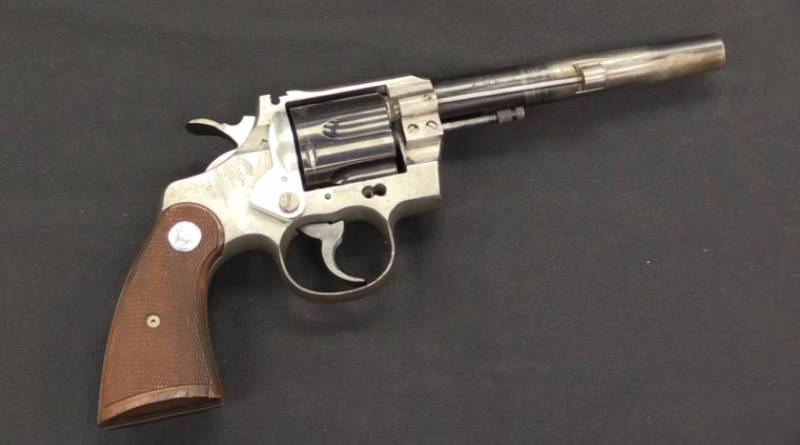
Information